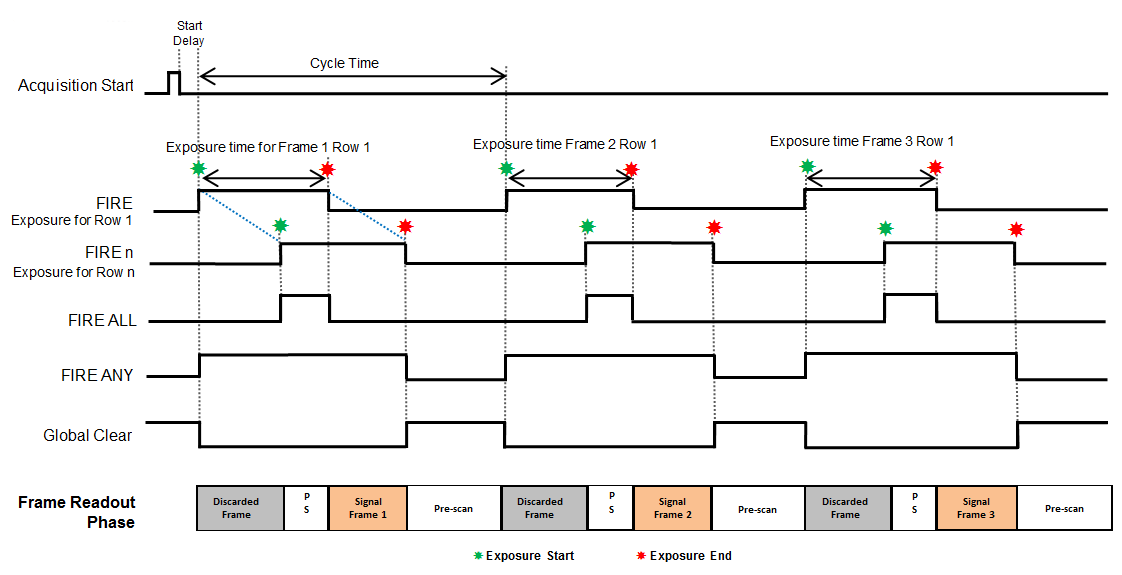Rolling Shutter Internal Triggering (Non-Overlap Mode)
Internal Trigger Mode allows the user to configure an exposure time and cycle time. For Internal Triggering Non-overlap mode, the exact acquisition sequence depends on the exposure time and cycle time set
Fire ALL indicates the time period within a frame during which all rows are exposing simultaneously.
Fire ANY indicates the time period within a frame during which any row is exposing.
Initially, the entire sensor is held in a global clear state to ensure that there is no charge build-up on the sensor. Global Clear goes LOW and a frame read out is initiated. This frame is discarded as it does not contain the correct exposure period. Reading out a frame effectively begins a new exposure. When the exposure period has completed, a signal frame read out phase begins. When the frame has been read out completely, the Global Clear is held HIGH until the user-defined cycle time is achieved.

Rolling Shutter Internal Triggering
Rolling Shutter Internal Triggering (Long Exposures) Timing Parameters
| Parameter | Minimum | Maximum |
|---|---|---|
| Exposure | 1 Row | 30 s |
| Cycle Time (1/Frame Rate) | Exposure + 1 Frame + 1 Row | 20,000 s |
| Acquisition Start Delay | - | 1 Row |